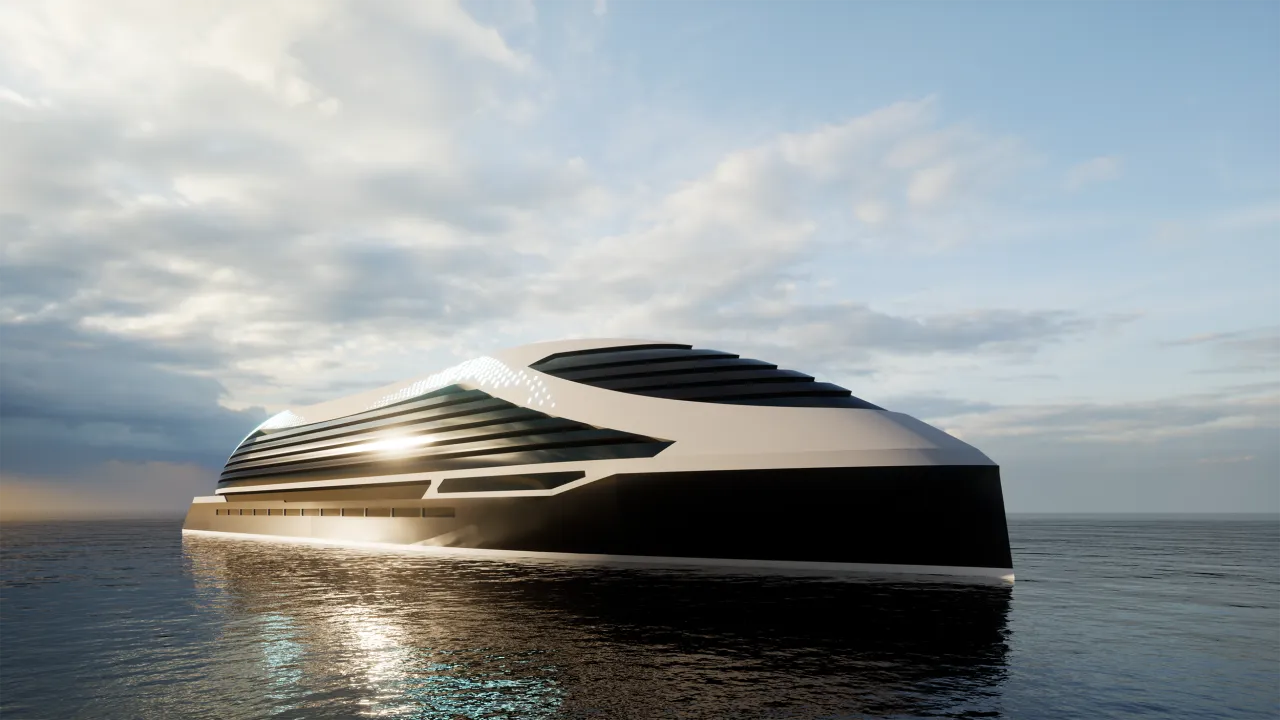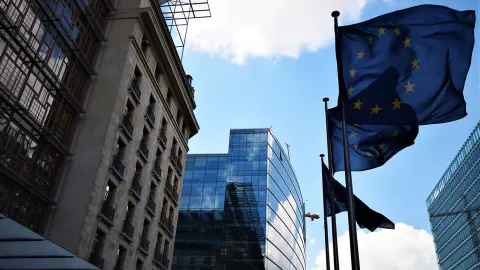The Finnish marine industry intends to win the ship development race

A draft of the carbon neutral NEcOLEAP cruise ship.
Published date
Harnessing new energy sources and reducing ships’ environmental impact are key goals in the efforts of the Finnish maritime industry to get ahead of its competitors. Driving forward the development work are the industry giants Meyer Turku and Wärtsilä. Reducing greenhouse gas emissions from shipping is also important for Finnvera, which is committed to the Poseidon Principles on monitoring the climate impacts of ship financing.
Driving the implementation of new technological solutions is not only the increasingly stringent environmental regulation in the shipping sector, but also cruise shipping companies’ forecasts of future passenger demands and preferences. On top of this, the increasing cost of energy now adds even more pressure to the timetable.
Tapani Pulli, Deputy CEO of shipyard company Meyer Turku, describes the current situation as a race. The winner is the one who most quickly invents and successfully implements the best technologies for customers.
Meyer Turku is the leading company in Business Finland’s NEcOLEAP financing programme, which is developing climate-neutral and sustainable solutions for cruise ships.
"We have been doing development work for decades, so this is nothing new to us. Our first goal is to develop a climate-neutral cruise ship concept by 2025. The second goal is to make shipbuilding at the shipyard carbon-neutral by 2030,” Pulli explains.
The cruise shipping sector is important for Finland, and half of Finnvera’s export credit guarantees – which total around EUR 22 billion – relate to ship financing. Finnvera monitors and reports on the climate impacts of its maritime financing liabilities based on the international Poseidon Principles. These principles are in line with the objectives of the International Maritime Organisation (IMO) to reduce annual greenhouse gas emissions from shipping to half of 2008 levels by 2050.
Hundreds of partners involved in the development work
The cost estimate for the NEcOLEAP project is EUR 160 million, of which Meyer Turku is covering around a quarter. The shipyard company has pulled in around 1,500 partners, ranging from start-ups to companies already operating in the maritime cluster and from research institutes to universities.
"We want to take a big leap towards ecosystem-based activities which result in completely new innovations. The ecosystem offers even small companies a great platform for utilising the power of networks,” Pulli says.
The research and development work is divided into four areas: cruise ships, shipyard operations, deployment of smart technologies and professionals of the future.
Artificial intelligence can be utilised better, for example, in the planning of ships’ route options. The shipyard, on the other hand, can take many small steps to reduce environmental emissions. One such area is internal logistics, where trucks could be replaced by fossil-free means of transport.
“The development of the cruise ship is divided into three parts: the hull, the machinery and vessel movement, and hotel services. Everyone has their own projects,” Pulli says.
In Pulli’s opinion, cruise travel may change in the near future to make the ship itself more of the focus. The range of cruise services is expanding based on a variety of themes. At the same time, ship speeds decrease, as there is no need to reach the next port as quickly as at present.
The fuel of the future is carbon-free
Wärtsilä’s product development in Finland is largely focused on advancing engine and fuel technologies. The company has global development projects related to battery technology, ship navigation and power plant solutions.
“Ship engines that use carbon-free fuels will be available by 2030. We have also set a second high-level goal of making our operations carbon-neutral by that point,” says Mikael Wideskog, Wärtsilä’s Director of Sustainable Fuels and Decarbonisation.
Carbon-free fuels include ammonia and hydrogen, while methanol is a carbon-neutral fuel.
According to Wideskog, the current trajectory is such that the use of LNG in ships will continue to increase up until 2035. During this period, vessels will also switch to blends consisting of both fossil-based and carbon-free fuels. The transition to carbon-zero and carbon-neutral fuels can take place on a large scale once they are widely available.
“Fuel consumption can also be reduced by decreasing friction in the hull and introducing different navigation and sailing solutions,” he adds.

Ship building at Meyer Turku shipyard.
Financing is a key element for the whole cluster
Both Wideskog and Pulli consider the Finnish product development environment to be fertile ground for new innovations. Companies work together, and universities and research institutes are also involved.
“There is a strong energy cluster in Vaasa, which is developing solutions for both land and sea. The Turku area, on the other hand, has an extensive shipyard cluster. We all have good opportunities to work together,” says Wideskog.
Pulli also highlights the availability of funding, which is vital especially for the capital intensive shipbuilding industry.
“Finnvera’s role is essential, as financial instruments play a key role in our business activities. The playing field must be fair for all competitors. And currently, it is,” he concludes.
Text: Kimmo Koivikko
Photos: Meyer Turku



